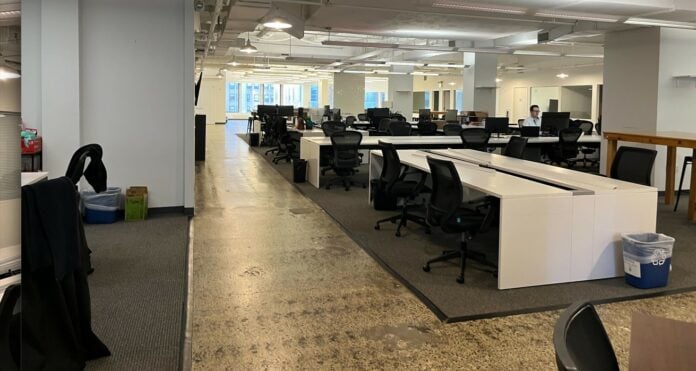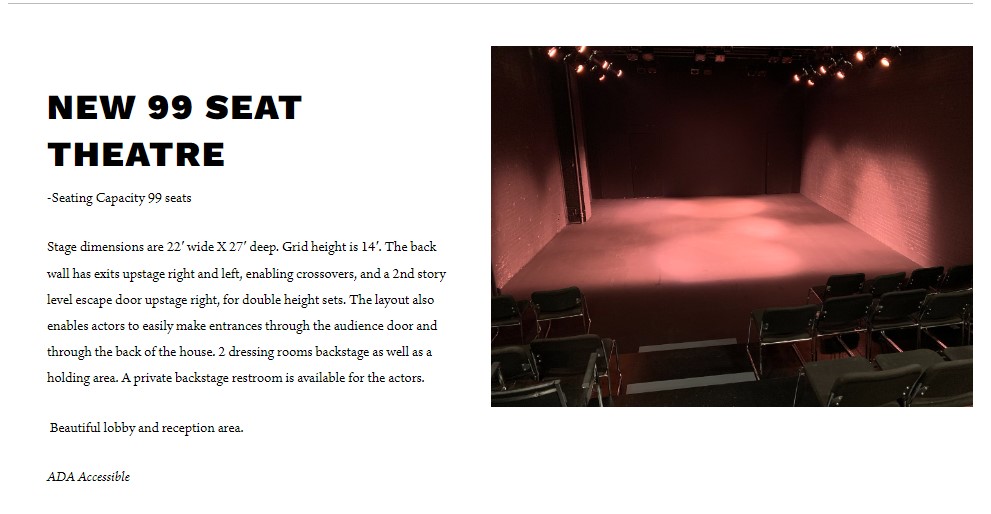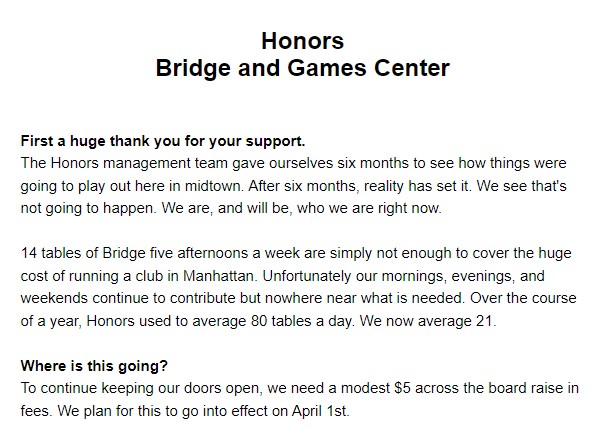We’re several years post-pandemic now and Midtown Manhattan is still trying to find a sustainable new normal. The most obvious culprit is increased work from home. Companies claim and pay for office space that sits empty, but without workers coming to their seats, the once bustling NYC coffee, lunch, and happy scene is a shadow of the pre-Covid peaks.
It’s getting better, just not quickly enough. The streets feel far more crowded than 1-2 years ago, but the majority of business owners are squeezed on both ends by higher wages, inflating expenses, and lower foot traffic. Today we focus on two interesting niches that have not quite recovered.
Theater Space For Rent
Pop-up event space has always been tricky to find in premium Midtown locations, but now off-Broadway, smaller theaters such as Chain Theatre are regularly offering their spaces to mitigate the shortfall. It’s unclear what you might host in a 99-seat theatre, complete with a 2nd story escape door and backstage dressing room. A corporate outing for all-hands meetings? A hackathon? Your own escape-room themed birthday party?
It would probably be cheaper than any of the usual hotel spaces to hold a corporate off-site event, but the dimensions don’t exactly lend themselves well to the usual coat check, catering, bar, and networking. Plus, you are paying for the trap door! How exactly will your company all-hands meeting use it? (HR and Security will not be happy)
Still, at least they should have the AV situation mostly under control. They also have two smaller spaces which could make for breakout rooms at a reasonable additional cost. It’s unclear if you need to use unionized labor or can bring in your own company, but the restrictions may be more flexible than those at hotels and traditional venues. Don’t expect theaters to turn into NYC apartments for rent anytime soon, though. Despite the many creative zoning variances under discussion, theater space is not on the list.
Bridge Clubs in Crisis
Before the pandemic, Manhattan was home to the largest bridge club in the country, and over the years the Greater New York Bridge Association included over 4000 members that frequented 4 fulltime clubs and several private invitational clubs (such as the Regency Whist Club, University Club, and Cosmopolitan Club). Unfortunately, bridge players are an aging population (median age 74). They were among the most at-risk group during Covid and many migrated to online bridge or stopped playing altogether.
The once thriving bridge clubs would hold daily tournaments and lessons twice a day, with the main game regularly reaching capacity at 140 players with tables overflowing to the elevator lobby, with many more taking lessons or playing a newcomer game on a different floor. Evening and weekend games thrived, and some morning sessions ensured heavy utilization of the space: approximately 60 hours of bridge usage per week.
Fast-forward to 2024 and Manhattan is down to one club in a significantly smaller space which fills to 60% capacity on a good day. There are promising signs for the Wed evening game and a monthly Sunday Swiss teams, but most other evening initiatives have fizzled out. Club management hiked prices 15% this month, $40 to play in the afternoon main game when online equivalent price is $7 (sans commute, Covid, and getting dressed).
Space Utilization Solutions?
Perhaps the real problem is utilization. One theory: a space in Midtown New York pretty much needs to be in use at least 40 hours a week in order to make economic sense (pied-à-terre excluded, by definition they do not make economic sense). Or, when used for fewer hours, the space is packed. A top flight Broadway show still runs 6 days a week with 2 matinees. Less popular shows don’t quite meet the bar. A fulltime bridge club holding only 20 hours of games per week will fold and needs to supplement with Canasta, Mah Jongg, Scrabble, and Backgammon (at one point they considered Magic: The Gathering).
Would it make sense in the future to build multi-purpose space that has one group heavily utilizing only during the day and another group only in the evenings? What would it take to build a space configurable to both bridge and theater, all in the same day? More amusing, could we extend the idea to apartments and offices? Instead of “work-from-home”, what if we reverse the concept to “sleep-at-office” where you save money on rent because everything you need, from showers to beds to baby cribs, could be found at the office?
Ok, sleep-at-office is probably not feasible, especially once families and children enter the picture. But we should continue to brainstorm creative and quirky solutions that could appeal to an open-minded niche and unlock many hours of idle space-time. By pushing the boundaries of what normal zoning and building codes allow, we might just stumble into a sustainable new normal.
Mr. "Hud" Chavij recently came from abroad and brought with him a level of determination and creativity that instantly gained him a reputation among the NYC real estate thought leaders.




